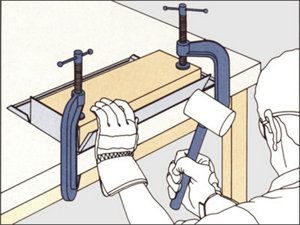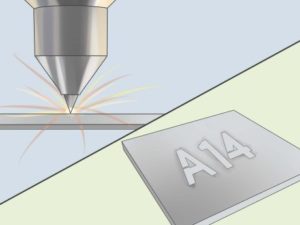Spring 2018: Biped Fabrication Methods (Trade-off Study)
By: Miguel Gonzalez (Project Manager & Manufacturing)
Approved by: Miguel Garcia (Quality Assurance)
Table of Contents
Related Requirements
L1-3: Micro FOBO will have 2 legs.
L1-4: Micro FOBO will be a toy robot based on the design of the FOBO by Jonathan Dowdall.
L1-18: Micro FOBO shall be able to traverse cloth, paper, and linoleum materials.
Introduction
When thinking about manufacturing our robot we looked at the many fabrication methods available that we could use to create the BiPed. Of course, the list of ways we can manufacture our robot can be endless, but we made sure to focus our research to limit this list. Our goal for this study is to list the most feasible methods of fabricating our robot and compare the pros and cons of each method. The top three most feasible fabrication methods we could implement on our robot was sheet metal folding, laser cutting, and 3D printing. This blog study will look at each method mentioned to see the benefits and disadvantages of incorporating them into our design. Below you can find our study and the results we arrived when conducting a few tests.
Sheet Metal Folding Method
The first fabrication method we looked at was sheet metal folding which is a process of getting thin metal sheets and cutting them into specific shapes that would be folded to produce a three-dimensional shape. This shape can be a servo mount, 3DoT casing, robot feet, and so much more. Sheet metal folding is cheap and is a good way to produce sturdy parts rapidly without much effort. One of the drawbacks of this method is that complicated designs are almost impossible to produce. Accurately measured pieces are hard to produce and making exact copies of parts that share the exact dimensions are nearly impossible to make using this method. These drawbacks are too big to ignore especially when we plan on creating a robot that requires precision measurements and complicated design.
Laser Cutting Wood
The next fabrication method we consider was laser cutting. Laser cutting is a very niche fabrication method for hobbyists but has been gaining traction in the recent years. With the laser cutting method, you can use various materials for your builds such as sheet metal, plastics, and even wood. This method of fabrication utilizes the precision of a powerful laser to cut material into a predefined shape. This means that you can achieve very accurate and precise cuts. Laser cutting, in general, is very versatile but our team realized that we lacked knowledge on how to use a laser cutter. It was also clear that laser cutting would only be used for a section of our robot design and can’t make complicated three-dimensional shapes that extend well above the laser’s cutting threshold. This takes us to the third fabrication method mentioned below.
3D Printing
Out of all the fabrication methods described in this blog post, 3D Printing was the only method of creating stuff that has been used by a team member. 3D Printing is a fabrication process of creating a three-dimensional object by adding small amounts of material upon itself until the desired shape/object is obtained. There are multiple ways a 3D printer can produce a design, but we focused on an additive manufacturing process called Fused Filament Fabrication (FFF). This is the most common consumer grade process that is readily available.
With 3D printing, we can model our robot’s chassis designs and print them out at the same dimensions specified in the CAD model. This would allow us to expedite the design and manufacturing process in our project. 3D printing also allows us to create precise measurements and make exact copies of parts while maintaining constant measurement accuracy at each copy. With FFF 3D printing we are limited to using only plastic materials but fortunately, we can choose from various plastics that have different properties. In a later blog post, we will be looking at the different materials available for FFF 3D printing and looking at their properties.
Conclusion
After considering all three methods of fabrication we decided that we should use 3D printing to create all the designs in our robot. 3D printing’s only drawback was that it can only produce stuff in plastics, but our team has concluded that plastic has enough robustness to make our robot function and complete the maze. Lastly, our class has been informed that multiple 3D printers are available in house to produce our robot parts and thus this method of fabrication is also the most available for us.



